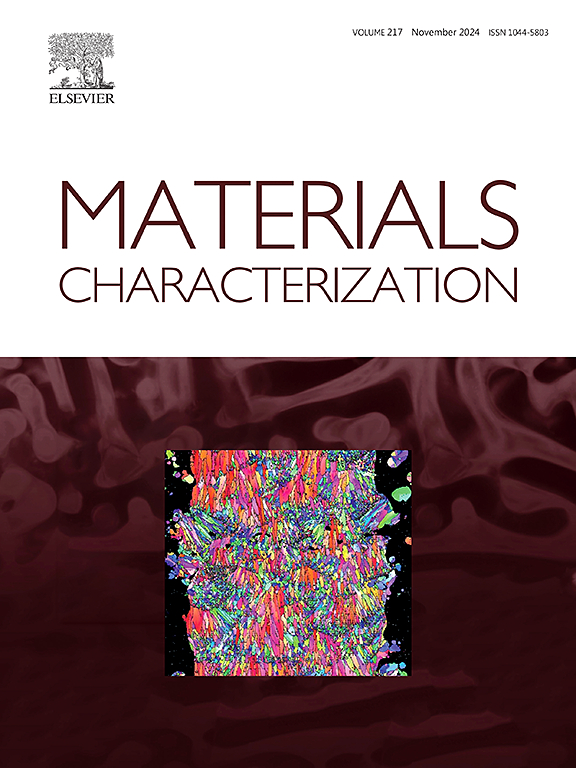Wire arc additive manufacturing of NiFe alloy/ductile cast iron bimetallic structure; phase transformations, microstructure and crystallographic texture
IF 4.8
2区 材料科学
Q1 MATERIALS SCIENCE, CHARACTERIZATION & TESTING
引用次数: 0
Abstract
Wire arc additive manufacturing (WAAM) is a significant area of interest within the field of additive manufacturing (AM). In the present research, WAAM technology was employed to deposit a Ni-based alloy on a ductile cast iron substrate to fabricate a bimetallic structure of Ni-45 %Fe alloy and ductile cast iron. Scanning electron microscopy (SEM), energy dispersive spectroscopy (EDS), electron back scattered diffraction (EBSD) and X-ray diffraction (XRD) were used to study phase transformations, microstructure and crystallographic texture development in interfacial regions as well as deposited material. The mechanical properties were also studied using micro-hardness and profilometry-based indentation plastometry (PIP) measurements. The results showed that a wide variety of phases are generated within the heat-affected zone (HAZ) and partially melted zone (PMZ). These phases form complex microstructures with single and double shell morphology. The deposited alloy has a face-centred cubic (FCC) structure, with some carbides and graphite that are formed during the solidification of the first deposited layer. The compositional changes were also observed across the interface. The texture of the deposited alloy showed around 30° deviation from 〈100〉 II building direction due to the shape and overlap of the melt pools. The present results provide a better understanding of interface development mechanisms during WAAM of bimetallic structures. The peak of the hardness across the interface was observed in PMZ because of the formation of a martensitic matrix. The PIP measurements showed that the and the of deposited alloy are lower than the cast iron base metal.
求助全文
约1分钟内获得全文
求助全文
来源期刊

Materials Characterization
工程技术-材料科学:表征与测试
CiteScore
7.60
自引率
8.50%
发文量
746
审稿时长
36 days
期刊介绍:
Materials Characterization features original articles and state-of-the-art reviews on theoretical and practical aspects of the structure and behaviour of materials.
The Journal focuses on all characterization techniques, including all forms of microscopy (light, electron, acoustic, etc.,) and analysis (especially microanalysis and surface analytical techniques). Developments in both this wide range of techniques and their application to the quantification of the microstructure of materials are essential facets of the Journal.
The Journal provides the Materials Scientist/Engineer with up-to-date information on many types of materials with an underlying theme of explaining the behavior of materials using novel approaches. Materials covered by the journal include:
Metals & Alloys
Ceramics
Nanomaterials
Biomedical materials
Optical materials
Composites
Natural Materials.
 求助内容:
求助内容: 应助结果提醒方式:
应助结果提醒方式:


